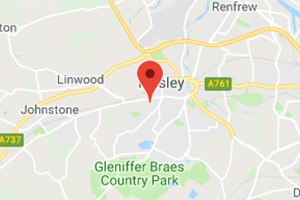Experiencing a fault code on a boiler can be a source of stress for homeowners. The Glow-Worm boiler is known for its reliability, but like any machine, it can encounter issues. When it presents with an F28 fault code, this typically points to a problem with the boiler’s ignition system. This issue often arises due to gas supply problems, but could also be an indicator of other underlying faults within the boiler’s components.
Understanding fault codes is essential for diagnosing boiler problems quickly and effectively. The F28 code on a Glow-Worm boiler specifically signals an ignition failure, which can be caused by a variety of factors. It ranges from simple issues like a disruption in the gas supply to more complex problems such as a defective gas valve or ignition leads. Taking note of this fault code and its implications can save time and ensure that the appropriate measures are taken to resolve the issue.
When a Glow-Worm boiler displays the F28 error, it is a call to action to either troubleshoot the issue oneself if competent to do so, or to seek assistance from a certified heating engineer. Tackling an F28 fault involves a systematic check of the gas supply, as well as the electrical components related to ignition. If these checks do not resolve the problem, a professional will need to assess whether components need cleaning, repairing, or replacing to get the boiler working correctly again.

Understanding the F28 Fault Code
The F28 fault code on a Glow Worm boiler is a clear indication of an ignition issue that prevents the boiler from firing up. It’s pivotal for users to comprehend the precise reasons behind this error code to take appropriate action.
Causes of F28 Error
The primary cause of an F28 error is a complication in the boiler’s ignition process. It surfaces when the boiler attempts to ignite but fails to do so. Common culprits include:
- Faulty ignition leads: These components are crucial for initiating the ignition sequence. If they are compromised, ignition cannot occur.
- Gas valve malfunctions: A defective gas valve can impede the flow of gas, thereby halting the ignition.
- Gas supply problems: Occasionally, external factors such as a disrupted gas supply to the premises can trigger the F28 fault code.
Observing Glow Worm’s guidance on how to fix it will be immensely useful in diagnosing and rectifying these issues.
Comparing F28 with Other Fault Codes
It’s beneficial to compare the F28 with other codes such as F22, which symbolises low water pressure, or F29, which indicates a flame loss during operation. While F28 focuses on ignition failure:
| Fault Code | Implication | Possible Issues |
|---|---|---|
| F28 | Ignition failure | Faulty ignition leads, defective gas valve, external gas supply problems |
| F22 | Low water pressure | Leakage, bleeding radiators or faulty pressure sensors |
| F29 | Flame lost during operation | Unstable gas pressures, flue problems or ionisation probe defects |
Distinguishing between the codes is critical as they each require a different approach to resolve the problem at hand. Therefore, understanding the F28 error code, as opposed to F22 or F29, will equip homeowners with the knowledge to seek the right repair path.

Initial Troubleshooting Steps
When faced with the F28 fault code on a Glow-worm boiler, there are several key steps an individual can take to potentially resolve the issue before calling a professional. Each subsection outlines a specialised area of focus for troubleshooting.
Checking Power and Gas Supply Issues
One should first ensure there is power to the boiler and that the gas supply is operational. A simple verification is to check other gas appliances or electrical sockets in the property. If these are not functioning, the issue may be with the utility supply, and the appropriate service providers should be notified.
Inspecting the Boiler Pressure Gauge
The boiler’s pressure gauge should display between 1 and 2 bar when the boiler is cold. If the reading is below 1 bar, the boiler’s pressure is too low and may require repressurising. Conversely, a reading well above 2 bar suggests too much pressure and may necessitate bleeding radiators or releasing water from the system to reduce pressure.
Assessing the Condition of the Ignition Leads
The ignition leads provide the necessary spark to ignite the gas. They should be securely connected and free from visible damage. If the leads appear worn or damaged, they may be the culprit behind the failure to ignite and may need to be replaced by a qualified engineer.
Verifying Flame Detection Components
The boiler’s flame detection components, such as the thermocouple or flame sensor, need to be in good working order to confirm the presence of a flame once the boiler has ignited. If these components are dirty or faulty, they might fail to detect a flame, leading to the F28 error. Cleaning or replacing these parts can resolve this issue.

